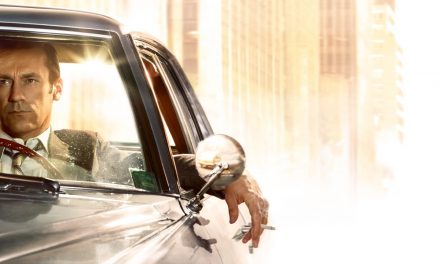CAMP TV OF THE 1960s. A collection of new scholarly essays edited by Isabel Pinedo and Wyatt D. Phillips
Manifestations of camp became increasingly prevalent across American culture in the 1960s. More significantly perhaps, this was the decade in which camp moved from the margins and subcultures into the mainstream. Susan Sontag’s famous “Notes on Camp,” published in the autumn of 1964, and the premiere of Batman on ABC’s prime-time lineup less than a year and a half later, in January 1966, notably mark this shift. Both before and after Batman and its egregious use of exaggerated clichés, a number of other television programs employed a loose set of textual and narrative characteristics generally associated with camp strategies, including Get Smart’s satire, Green Acres’s surreal humor, and the anarchic nature of The Monkees. The medium of television was clearly critical to camp’s move into popular culture.
Pinedo and Phillips, the editors of this new collection, argue in a 2018 article in the Journal of Popular Television that these shows and a handful of others constitute a genre of 1960s television that can be identified as “Camp TV.” Almost simultaneously, Quinlan Miller’s new book (May 2019), Camp TV: Trans Gender Queer Sitcom History, engages a different set of theoretical and historical perspectives to similarly designate such a televisual genre. The shows they analyze not only allowed but seemed to encourage viewing practices that transcended the infantilized conceptualization of that era’s television audiences, appealed specifically to a youth audience (separate from the juvenile audience many of these programs targeted), and lent themselves to multiple readings. Moreover, and in line with other expressions of camp, many of these programs possessed a disguised but nonetheless subversive political edge relevant to the cultural contestation and social transformation of that decade.
This new edited volume looks to expand the scope of study and the scholarship on this body of programs and this era of television through a series of new essays. Authors may choose to focus on a specific program or pursue an analysis that draws from a range of evidence provided by the programs and texts of the period.
Potential contributors may consider such topics and questions as…
- Any of a number of critically overlooked or underestimated 1960s American primetime programs that drew significantly on aspects of camp, such as Rocky and His Friends/The Bullwinkle Show, F Troop, The Man from U.N.C.L.E., The Addams Family, Gilligan’s Island, The Beverly Hillbillies, and The Munsters.
- Novel readings of Batman, The Monkees, Laugh-in, and other more heavily analyzed programs in relation to a developing genre of Camp TV.
- How did Camp TV, like camp generally, create different meanings for different audiences?
- How were traditional elements of camp carried over and how were they adapted to the medium specificity of television in that period?
- To what degree do issues of camp in 1960s television remain critically aligned with representations of gender and sexuality, particularly queer applications of a camp aesthetic, and where and why do they stray from that association?
- How does color operate as a signifier of otherness – are there/what are the relations between the alien topographies and space age technology of Star Trek, the newness of color on 1960s TV, and camp sensibilities on Camp TV programs?
- How did the widespread transformation to color programming (despite the continuing limits on color reception) encourage and/or affect campy television programs?
- What was the influence of Pop Art on the mainstreaming of camp in the 1960s and specifically on Camp TV?
- British television programs that should be included in such a Camp TV genre.
- How did the syndication history of UK shows like The Avengers, from which American producers borrowed talent or content, influence US Camp TV programs?
- The various precursors to these primetime programs that exhibited key aspects of camp and that could similarly be found on American televisions of the decade, such as the use of crossdressing in The Three Stooges and Bugs Bunny shorts originally made for theatrical screenings but repackaged for 1960s television.
- A social network analysis (in the sociological sense) of behind the camera talent, the circulation of producing/writing talent, between Camp TV productions of the period and its precursors.
- manifestations of camp in other kinds of American television, including:
- commercials;
- children’s shows;
- evening and late-night talk shows;
- as a topic on news programs.
Isabel Pinedo is an associate professor in the Department of Film and Media Studies at Hunter College (CUNY). Wyatt Phillips is assistant professor of film and media studies in the Department of English at Texas Tech University.
Several academic publishers and well–known scholars have already expressed interest in this collection of essays.
All submissions must represent previously unpublished work.
Please send a 250–300 word abstract (including a working title), a brief (50–100 word) author bio, and CV by Aug. 15, 2019 to camptvanthology@yahoo.com
All notifications of acceptance will be emailed no later than October 15, 2019. If an abstract is accepted, a full-length essay of approximately 6000–8000 words is due by June 20, 2020. All chapters will be reviewed by the editors before submission to the publisher and potentially subject to further review. Please note that an invitation to submit a full essay does not guarantee inclusion in the volume.
Any questions or inquiries should be directed to camptvanthology@yahoo.com





